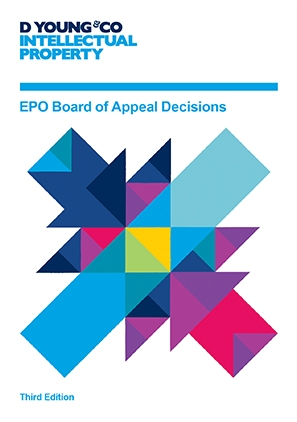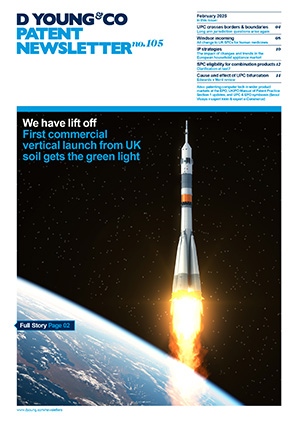Patenting AI: certainty at last from the EPO?
In recent years the importance of artificial intelligence (AI) and machine learning (ML) has grown relentlessly as its application has spread to ever more areas. While just a few years ago AI and ML were of central importance primarily in the computing field, they are now becoming increasingly critical elements in industries as diverse as the automotive, pharmaceutical and retail sectors. As such, legal certainty of what technological innovations can and cannot be patented in this area is now of vital importance.
Background
The European Patent Office (EPO) has historically taken a two-step approach to determine whether an idea in this area can be patented.
First, the EPO applies a simple yes or no test as to whether an idea falls within an area excluded from patentability by Art. 52(2) EPC. These are:
- discoveries, scientific theories and mathematical methods;
- aesthetic creations;
- schemes, rules and methods for performing mental acts, playing games or doing business, and programs for computers;
- presentations of information.
On the face of it, this would suggest that AI and ML are excluded from patentability by being “mathematical methods” and/or “programs for computers”. However, Art. 52(3) EPC goes on to make clear that these exclusions apply only to the extent to which an application relates to this subject-matter “as such”. Case law has interpreted this provision permissively such that this hurdle is normally easy to pass, for example, by including in the application technical means such as computer hardware.
The second, more challenging, hurdle at the EPO is to demonstrate the presence of an inventive step under Art. 56 EPC. This is assessed by taking into account all features which contribute to the technical character of an invention even if a given feature taken in isolation would be considered “non-technical”. So an AI or ML algorithm, even though in isolation would be regarded as a “mathematical method”, can, and indeed in many cases does, contribute to the technical character of the claim and hence can support an inventive step.
While, in principle, this sounds straightforward, the difficulty in practice arises in determining whether a particular AI or ML algorithm contributes to the technical character of a claimed invention.
The new EPO Guidelines which came into effect in November 2018 aim to improve the situation and reduce the uncertainty for applicants as to what is patentable.
New guidance from the EPO
In the November 2018 edition of the Guidelines, the EPO tackled this uncertainty head-on with a completely rewritten section setting out how examiners are required to handle applications incorporating mathematical methods and a brand new section dedicated to the handling of artificial intelligence and machine learning.
EPO Guidelines for Examination: mathematical methods
Read moreMathematical methods
In the mathematical methods section, it is made clear that there are two broad manners in which mathematical methods can contribute to the technical character of a claimed invention: either as a “technical application” where the mathematical method is limited to a specific “technical purpose”; or as a “technical implementation” where the claims are directed to a specific technical implementation of the mathematical method where the mathematical method is particularly adapted for that implementation in that its design is motivated by technical considerations of the internal functioning of the implementing computer.
Artificial intelligence and machine learning
The artificial intelligence and machine learning section provides some typical examples of applications which would be considered technical and hence could support an inventive step. These include the use of a neural network in a heart-monitoring apparatus for the purpose of identifying irregular heartbeats and the classification of digital images, videos, audio or speech signals based on low-level features (for example, edges or pixel attributes for images).
Conversely, classifying a text document solely based on its textual content (regarded as a merely linguistic purpose) and classifying “telecommunication network data records”, without an indication of a specific technical use being made of the classification, are given as typical non-technical examples which could not support an inventive step. The section also emphasises that the “training” of an AI or ML algorithm does not in of itself prevent the AI or ML from being considered abstract and hence does not in itself allow the AL or ML to contribute an inventive step.
Conclusion
It is very encouraging to see that the EPO is working hard to increase legal certainty for applicants in this area. However, it is also clear that further guidance would be beneficial in navigating this admittedly complex area.
In our experience of the EPO’s approach to developing technologies, we would expect the EPO to considerably develop their guidance in the coming years as new judgments from the Boards of Appeal become available, providing further concrete examples of where the boundary lies between patentable and non-patentable subject-matter in this area.


